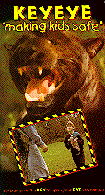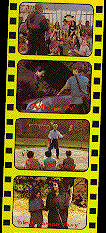

![]()

|
Keyeye: Making Kids Safe.
Produced by Kent Gravelle and Robin Webb. Subject Heading:
Grades 3 - 7 / Ages 8 - 12.
****/4
|
excerpt:
We all have the ability to recognize danger. It's a matter of knowing what to look for that keeps us safe -- that keeps us from getting hurt or being taken away. We'd like to show you how to do just that. So -- the object of this program is to learn to recognize danger in our daily lives no matter how small. That means learning to listen to your gut and trust your instincts.
This high-quality video is the result of years of work. The Keyeye program has been taught in schools since 1981, and the producers of this video also put out Hands Off II in 1990, a self-defense video for women that also included a segment at the end showing the Keyeye program for children.

Highly recommended.
Theresa Yauk works in the Special Services department at the Winnipeg Centennial library; she previously worked in the Children's Department for six years. She is currently studying for a Master's degree in Library and Information Science.
To comment on this title or this review, send mail to cmeditor@mts.net.
![]()
Copyright © 1996 the Manitoba Library Association.
Reproduction for personal use is permitted only if this copyright notice
is maintained. Any other reproduction is prohibited without permission.
Published by
The Manitoba Library Association
ISSN 1201-9364
![]()